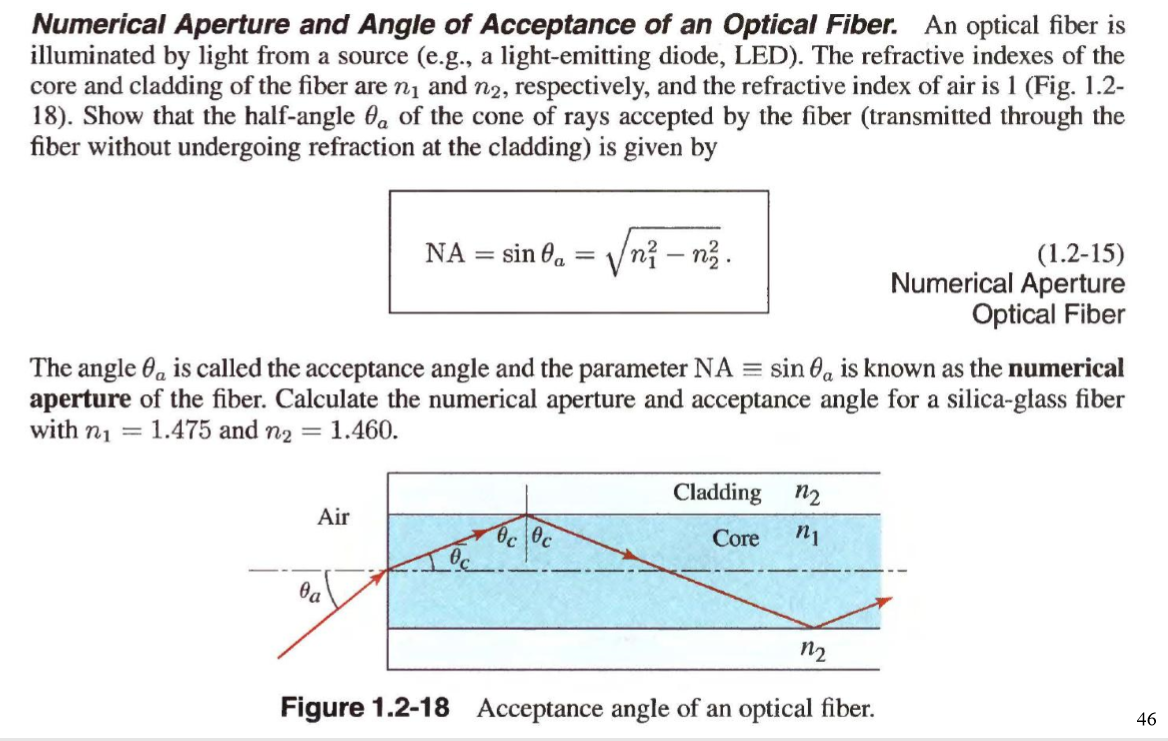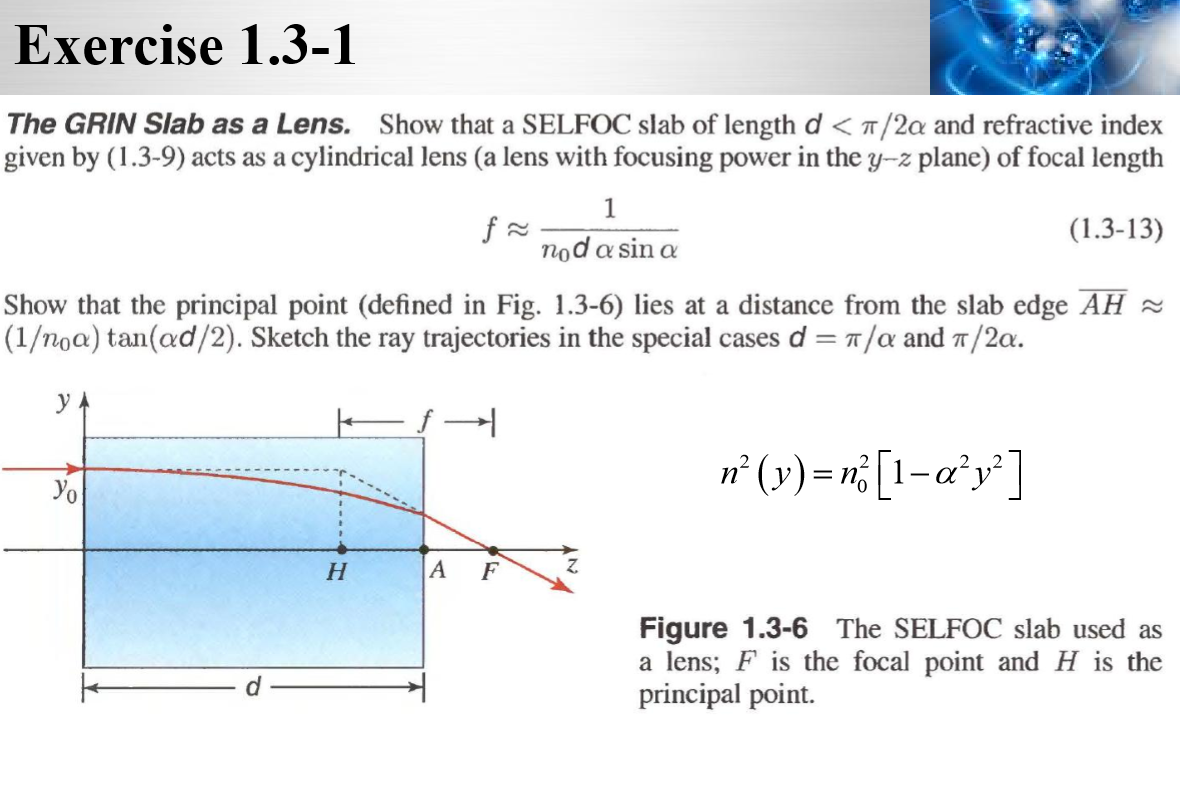
Source: Chegg
Understanding the Numerical Aperture in Optical Fibers
Introduction to Numerical Aperture
The numerical aperture (NA) of an optical fiber is a critical parameter that defines its ability to collect and guide light. It is determined by the refractive indices of the fiber’s core and cladding. This parameter is essential for understanding the acceptance angle, which is the maximum angle at which light can enter the fiber and still be guided effectively.
Acceptance Angle and Total Internal Reflection
The acceptance angle is closely related to the concept of total internal reflection, a phenomenon where light is completely reflected within the core of the fiber due to the difference in refractive indices between the core and the cladding. This reflection is crucial for guiding light through the fiber without significant losses.
Geometrical Optics vs. Wave Optics
The acceptance angle is derived from the principles of wave optics but is often applied in the context of geometrical optics. This can lead to misconceptions, as light guided in a fiber is not a plane wave but is confined to the core, leading to diffraction effects and a continuous angular distribution.
Angular Distributions Beyond the Numerical Aperture
While the numerical aperture provides a theoretical limit for the acceptance angle, in practice, the angular distribution of light in fibers can exceed this limit. This is because the guided modes of a fiber have far-field intensity distributions that do not abruptly vanish at a specific boundary.
Single-mode Fibers
In single-mode fibers, the core radius significantly influences the output beam divergence. When the core radius is small, the mode radius is large, resulting in weak beam divergence. Conversely, a larger core radius results in a smaller beam radius, with a significant portion of the optical power extending beyond the NA limit.
Few-mode and Multimode Fibers
In few-mode fibers, higher-order modes can extend beyond the NA limit, particularly those close to their cut-off wavelength. In highly multimode fibers, only some of the highest-order modes exceed the NA limit, while others remain well within it.
Conclusion
The numerical aperture provides a useful framework for understanding light guidance in optical fibers, but it is not an absolute limit. The angular distribution of light can extend beyond the NA limit without leading to propagation losses, provided the fiber is free of absorption and scattering. Numerical and analytical methods complement each other in studying these phenomena.
Further Reading
For more information on optical fibers and their properties, consider exploring additional resources on fiber optics and wave propagation.

Source: Chegg
Feel free to comment your thoughts.



